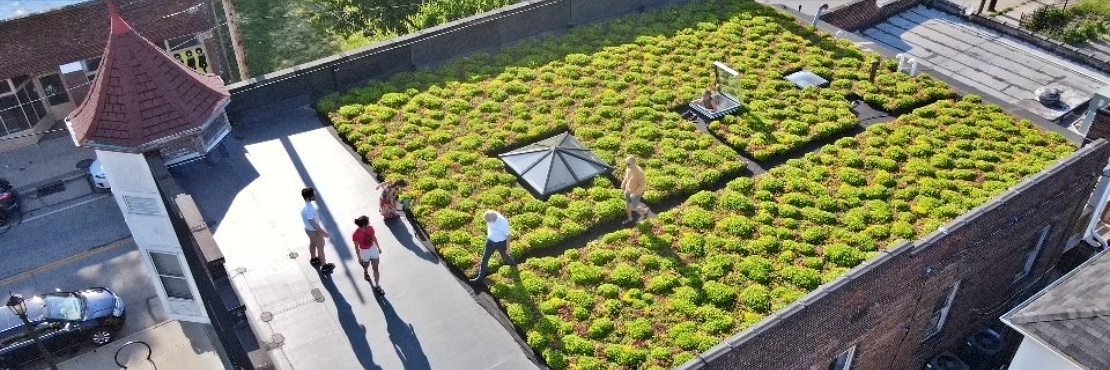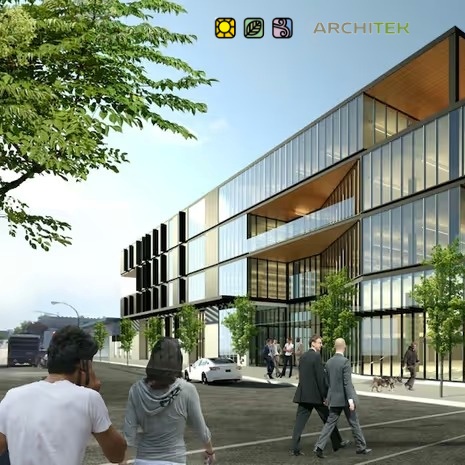Douglass J. Guth of The Land writes:
Amy Callahan, executive director of the Waterloo Arts nonprofit, understands that Collinwood is not exactly known for its resplendent greenery. Outside the odd grass-covered lot, the East Side Cleveland neighborhood is your typical concrete jungle. To help change the landscape – as well as reduce the stormwater flowing into the region’s combined-sewer system – Waterloo Arts recently utilized a green infrastructure grant from the Northeast Ohio Regional Sewer District (NEORSD). The $232,435 award funded a new vegetative roof system at the nonprofit’s headquarters, along with an underground cistern to harvest stormwater runoff from the redesigned roof. “The project prolongs the life of the roof, because it’s covered with plants that protect the entire roof layer,” said Callahan. “It’s also providing food for pollinators.”
Reducing stormwater runoff
Green roofs are just one facet of environmental infrastructure NEORSD is spreading throughout its combined-sewer service region. Bioretention areas, permeable pavement, and rainwater harvesting are also aimed at transforming the face of Cleveland’s neighborhoods one grant at a time.
These projects reduce the potential for flooding and eroded stream banks that can happen when sewers are overwhelmed during heavy storms. Stormwater-related impacts of pollution and waterborne illness can also be alleviated when water management features are reintroduced into the region’s built environments.
“We’re trying to mimic the natural processes lost because of urbanization,” said Christopher Hartman, a stormwater technical specialist with NEORSD. “It’s about recreating those processes that filter and source stormwater.”
Grants are available in cities with combined sewers, a system that carries both storm and sanitary sewage through the same pipe. During heavy storms, the volume of wastewater can exceed system capacity, leading to discharge into nearby streams and rivers. Cities in NEORSD’s service area with combined sewers include parts of Cleveland, Lakewood, Brooklyn, Newburgh Heights, Cuyahoga Heights, Garfield Heights, Shaker Heights, Cleveland Heights, and East Cleveland, and all of Linndale.
A typical bioretention area – also known as a bioretention cell or rain garden – uses soil, plants, and microbes to treat runoff. Shallow depressions are filled with soil, mulch, and dense vegetation, capturing runoff absorbed into plants or drained into groundwater.
Three bioretention cells planned as part of a Shaker Heights traffic calming project, for example, will collect runoff from the roadway and adjacent properties. The green development – recently awarded a $221,000 grant by NEORSD – is also set to reduce traffic speed and volume by narrowing traffic lanes at Scottsdale Boulevard and Chelton Road.
A typical rainwater harvesting system, meanwhile, collects and stores rainwater in barrels as well as more sophisticated structures such as pumps, tanks, and purification systems. New cisterns at the City of Cleveland’s animal control department divert rainwater from the roof for irrigation and animal control vehicle washing, according to NEORSD.
Read more: Sewer district grants send green infrastructure dollars to Cleveland neighborhoods
 Greenroofs.comConnecting the Planet + Living Architecture
Greenroofs.comConnecting the Planet + Living Architecture









